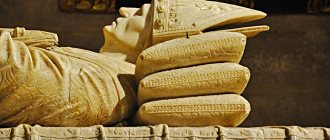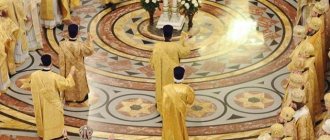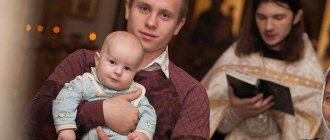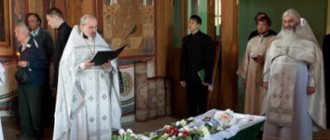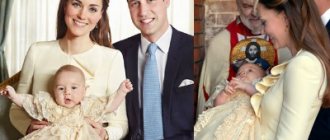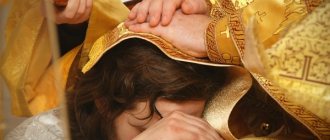How to dress for a funeral in Orthodoxy and Muslims: Unsplash In the life of a believer, funerals of loved ones occupy an important place, since they are associated with farewell and helping the soul of the deceased. Both Orthodoxy and Islam have clear rules for burial and attending funeral ceremonies. What should be the uniform at the cemetery and what kind of clothing should you not wear to a funeral?
What does mourning clothing symbolize?
The colors of mourning can be different: from light to dark shades. The choice is most often determined by belonging to one or another social group of people (formed taking into account religion or secular rules). Reasons why mourning clothes are worn:
- observing funeral etiquette based on old traditions, in other words, this is how they pay tribute to external decency;
- an opportunity to show others that a person is in grief, he is not able to actively communicate, solve work issues, deal with everyday issues, thus, there is a temporary removal from the outside world for a while until the pain subsides, is accepted, lived.
The color black symbolizes the feelings and depth of grief after the death of a loved one.
Mourning clothes
Preparing for the burial of dead people
Deceased people, regardless of age and gender, are usually buried in clothes and in compliance with certain rituals and procedures. First, the body is taken to the morgue, where it is:
- wash (this is done by morgue employees, specially hired people or acquaintances of the deceased, but not related to him, mostly women);
- retouch if there are visible scars on the face and open areas of skin;
- embalmed.
They are buried on the third day after death. For the funeral, they purchase a special mourning set for the coffin and vestments for the deceased, including shoes.
In the old days, the water remaining after washing the deceased was poured into a place where people almost never appear and there is no grass. The same was done with the water in which the dishes were washed after the funeral. The bowl in which the rag used for washing was soaked was broken and thrown away. People believed that in this way they would protect themselves from the return of the deceased from the dead in order to torment their relatives (in the form of a spirit, ghost).
Funeral dress from everyday wardrobe
Basic requirements for mourning dress code
There are generally accepted standards for how a woman or man should dress as correctly as possible for a funeral. Those who come must comply with the dress code requirements so as not to offend the relatives of the deceased with inappropriate appearance:
- modesty and restraint: revealing outfits are considered inappropriate; they will certainly attract attention, given that the purpose of the funeral is to say goodbye to the deceased, it is better to wear things that will not make you stand out from those who came;
- strictness and conservatism: flashy outfits, bright colors - inappropriate clothing, it can be considered the best option among other nationalities, but not for Orthodox believers in Russia; by default, they often wear things of strict shapes, conservative models (usually closed type);
- dark color of clothing: according to Christianity (Orthodox denomination), it has long been customary to wear black clothes, but today, by dressing in this way, those who come do not always fit into the environment (for example, during the burial of an eccentric person or a person who indicated in the will to avoid formalities), they began to introduce other dark colors - blue;
- clean and ironed things: appearance should be neat, this means that it is acceptable to wear modest things (not branded/fashionable), they should be washed and ironed on time, otherwise disrespect will be shown to the deceased and his relatives;
- seasonality of the outfit: the appropriateness of clothing is another important criterion for its selection; you should wear things according to the season, since the duration of the preparation for the funeral, the ceremony itself can be significant (you also need to take into account the wake), and the stay at the cemetery and in the guest’s premises wearing something inappropriate for the season can cause severe discomfort, not to mention the misunderstandings that such an outfit will cause;
- what you should not wear to a funeral: open dresses, blouses, even if they match the color of the funeral event, items made of transparent fabric, miniskirts, clothes made of materials with bright patterns, ornaments, embroidery, colored items decorated with rhinestones, beads, sports things and shoes.
Funeral dress code
If you dream about a funeral, often such a symbol has the opposite meaning - a long life or a wedding.
What should women wear?
It is quite natural for representatives of the fair sex to want to stand out from those around them, but a funeral is not the occasion when you need to organize a fashion show. The best option for women's mourning attire: a trouser suit or an elongated dress with a classic cut. In Russia, Ukraine and Belarus, it is customary to complement the look with a black shawl, scarf or headband. This is especially important if during the funeral procession a funeral service for the deceased is planned in church. According to the canons, girls are not allowed to enter church with their heads uncovered, so these accessories will come in handy.
What to do if you don’t have a trouser suit or a long dress in your wardrobe, but you don’t have time to buy one? You may prefer an alternative in the form of jeans or loose-fitting trousers, a blouse or turtleneck, and over them a cardigan, scarf or long sweater. Sundresses and T-shirts are not allowed.
As for the choice of shoes, it is limited to closed shoes with flat soles or low heels. This also makes practical sense, since walking along the cemetery paths in high heels is simply inconvenient. Makeup should be unobtrusive and as natural and unnoticeable as possible. What you definitely shouldn't do is wear bright lipstick.
How to dress for a funeral for a man
The most suitable option for mourning clothing for men is a formal black suit. It symbolizes the depth of grief, the tragedy of the occasion, for which relatives and friends gather, and also allows you to pay tribute to the deceased and relatives. A tie doesn't always complement a suit. The higher the level of formality of the event, the stricter the requirements for clothing. When holding a funeral at the highest level (state), this accessory is mandatory, but it can also be worn for the purpose of attending a regular burial procedure.
When family members decide how to dress for a man’s funeral, they consider a looser form of clothing - trousers and golf without a jacket. Other colors are also acceptable: gray, dark blue, and less often green. It is not recommended to wear short sleeves.
Shirts should be neutral colors (white, blue, light blue).
A bouquet of flowers is also of great importance in a funeral ceremony.
They also tidy up the face and the whole head: they get a haircut, trim the beard and mustache, an alternative option is smooth-shaven skin.
What to wear if you have to carry a coffin
Military personnel come to funerals in uniform. Moreover, a mourning bandage on the arm is mandatory. In other cases, you can wear a formal black suit and a white shirt. If the funeral procession will take place with the participation of other people, consider an alternative version of men's clothing - wear classic dark jeans, a jacket, and a shirt.
How should men dress?
A universal option for men's funeral attire is a traditional suit with a shirt and tie, naturally within the recommended palette. If you want to choose a less strict and formal style, you can wear dark or black jeans with a loose fit and a plain dark top. The range of suitable shoes is not very wide - black shoes or moccasins.
How to dress for a funeral as a woman
Revealing clothing may cause offense to those present during the funeral procession. The choice of items is made taking into account the level of activity at the funeral. If you plan to go to a funeral service in a church, you should not choose trousers, even if they are the right color - dark. It is better to wear a black dress of a closed style. They prefer maxi skirts (floor length, ankle length). Such clothes are combined with a cardigan, a plain dark-colored blouse, and a jacket.
A headscarf is practically an integral part of mourning clothing for a woman.
Mourning clothing for a woman requires the ability to hide the arms up to the hands. Only in warm weather should you wear things with sleeves up to the shoulder/elbow. Decor, thin straps, transparent inserts on women's clothing - all this is inappropriate during a funeral procession.
The color of funeral clothing is sometimes determined by the degree of relationship with the deceased. So, close relatives of the deceased should wear black, while brown, green, purple, and burgundy may be worn by those who are not first- or second-degree relatives.
What does a deceased woman need?
Relatives need to know that a list of the following things is required for a deceased woman:
- underwear (bra, panties);
- body shirt;
- stockings (tights);
- handkerchief;
- basic clothing (usually a dress or suit: jacket+skirt, jacket+pants);
- shoes.
You should not choose wardrobe items in bright colors, as this will look ridiculous. For this case, classic colors and pastel colors are more suitable.
Headdress in the temple: is it necessary to wear a headscarf?
According to European traditions, women wear black hats with a small veil, but without flashy jewelry. According to the church customs of Orthodoxy, you need to dress a little differently for church - women should wear mourning-colored scarves. An alternative option is to cover the head with a black bandage. During farewell, women do not remove their headscarf, as in cases when they participate in a funeral ceremony. Moreover, the hair needs to be collected.
Mourning head cover
What are Kazakhs buried in and how?
Preparing the body of a deceased Kazakh for burial begins with washing. Moreover, if the deceased was a man, then this task is entrusted to male persons; women are washed by women. The tools used for washing are buried near the grave. Kazakhs who profess Islam are dressed in:
- akyret (there are female and male versions of this national funeral costume - a shroud, the male one consists of 3 parts, and for women - 5);
- turban if a man died.
For akyret, a thick white cloth is needed, which is used to wrap the body and legs. A man's turban is made from the same fabric. The deceased, previously dressed in akyret, was also wrapped in a carpet, bandaged in three places. Now they can wrap me in felt. The ritual of placing the body in a shroud and sewing it is entrusted to the mullah. After reading all the necessary prayers over the body and performing rituals:
- distribute all the clothes of the deceased;
- they carry the body out of the house head first;
- they place the deceased on a wooden board and read a special prayer over him - zhanaza (only men are present at it);
- they carry the body to the cemetery, carrying it feet first.
During the burial of Muslims, only men are present; women at this time remain at home and perform the required rituals.
Burial of Kazakhs
Inappropriate accessories at a funeral
When deciding what to wear to a funeral, do not consider jewelry for this purpose. Relatives of the deceased should dress modestly, neatly, and discreetly. Any accessories are designed to decorate a person’s appearance and make him stand out from the rest. This is not acceptable during a funeral. Permitted accessories:
- watches, if a person wears them every day, they are a familiar element of attire;
- wedding ring for married people;
- If a person wears earrings every day, it is permissible to come to the cemetery without taking them off, but they should be of a classic model, small, and the stones should not be large.
- a cross or other religious attribute (for example, a Star of David).
When deciding how many decorations there should be, you need to be guided by the rule: the less, the better.
People in black clothes at a funeral service
When mourning style does not require rigor
If the deceased person was a creative, extravagant person during his lifetime, and also expressed special wishes regarding the concept of the funeral process, his request should be fulfilled. For example, if most of the guests at the farewell ceremony are extraordinary individuals who profess the same truths as the deceased in their clothing style, you should not force them to come to the funeral exclusively in black robes. If unquestioning adherence to a mourning appearance is not required in this particular case, the relatives of the deceased notify all participants in the funeral ceremony in advance.
Hairstyle and makeup of a woman at funeral events
Loose hair, as well as complex styling with a lot of cosmetics and volume are not suitable options for a funeral. Before going to the funeral service and churchyard, they make a ponytail, a bun, and for short hair, a simple hairstyle, it should look natural. Toning care products are prohibited. You should not appear with bright hair color. Makeup recommendations:
- it is best if the eyes and lips are not made up, firstly, many cannot contain their emotions at a funeral - they cry, and secondly, bright makeup, like accessories, makes a woman more noticeable among others, it is inappropriate to stand out in this way when saying goodbye to the deceased ;
- let's say natural makeup in pastel (restrained) tones; it should not be very noticeable when looking at a person.
Woman's mourning portrait
How to dress children for a funeral procession
Recommendations for choosing clothing are similar for children and adults. When deciding what to wear for a child, consider options that meet the following criteria:
- clothes for the funeral are chosen in dark colors;
- long hair must be collected with elastic bands;
- closed-type shoes, not sports, but not too open - shoes or another option, depending on the season (shoes, boots) will do;
- if children are going to go to a funeral with their parents, it is necessary to dress modestly: it is recommended to choose things without decor, stripes, beads, sequins, rhinestones.
Children are instructed how to behave; children who are too young (under 3 years old) are not accepted for various reasons. Firstly, they are exposed to the negative energy of this place, and secondly, they may cry, and such sources of noise disturb the atmosphere of peace and interfere with religious rituals.
Girl in mourning clothes
What not to do
It is customary to bury the dead in white clothes. Anyone going to the churchyard should take this into account. This means that those who come to say goodbye to the deceased should not wear things of this color. This is due to superstitions, which are inappropriate when conducting an Orthodox ceremony, but people usually strive to avoid unpleasant associations by all means.
In addition, according to local traditions, it is customary to wear dark clothes; white colors in funeral attire are a sign of disrespect for the deceased.
Who should dress the deceased?
The morgue staff will dress the deceased if you first bring them a suitable set. But this can also be done by relatives or friends. In the old days, only women, elderly or unmarried, had to dress the deceased; the same rule applied to washing the body. Now this is no longer a ritual, but an ordinary everyday process that can be entrusted even to a stranger for a fee.
Seeing off the deceased on his last journey, the relatives understand that they will never see him again in this life. But many people don’t know anything about funerals, what they bury people in, or how it’s done. It is important to bury the body as it should be, with maximum observance of all required rituals. Particular attention is paid to the funeral set and clothing in which the deceased is planned to be placed in the coffin. Men are buried in dark suits, women in dresses or skirt suits. The color and texture of clothing depend on the age of the deceased and his preferences during life.
How to dress for a funeral in the summer while maintaining restraint
When choosing things, several factors are taken into account:
- own comfort: it should not be hot or cold, since you will have to stand for quite a long time at the funeral service and during the funeral in any weather;
- compliance with the season;
- appropriateness: those who come should not dress extravagantly or attract attention to themselves.
Recommendations for choosing/buying the right things in the summer:
- natural fabric, which allows the skin to “breathe”;
- It is permissible to wear a dress with short sleeves (must cover the shoulders), but not with straps;
- men also choose the summer version of the suit - made from natural fabrics, fairly thin material, since it is not recommended to take off the jacket, even if it is very hot.
Funeral
What to wear to a cemetery in winter
Outerwear cannot be light shades. There should be no inserts or decor on it. Pick up warm clothes. If a suitable jacket is not available (in regions where the winter is not frosty enough), you should wear a wool sweater underneath.
At the same time, things should not stand out, for example, a fur coat is not a suitable option for a funeral.
It is acceptable to choose winter clothes, as well as jackets that are worn in spring and autumn, in other colors - not just black. It can be in blue, green, gray tones. When planning to go to a wake after the burial, they also choose the things that will be under the jacket. They should also be dark in color.
How to dress a dead woman
Women's funeral attire consists of:
- a skirt covering the knees in a dark shade;
- blue or green blouses;
- jacket to match the skirt;
- dark stockings or tights;
- underwear (some funeral agencies dress you in pantaloons and a nightgown);
- hard-soled slippers or flat shoes;
- a scarf on the head (the scarf should cover the hair, its ends cross under the jawline, without tying).
Clothes should not be decorated in any way; beads, rhinestones and even embroidery are not welcome. If necessary, if relatives do not know what to bury an elderly woman in, whose clothes, previously purchased for a funeral, have suddenly become too small, she is placed in a coffin in a shroud (funeral clothing). The suit on the list can be replaced with a dress with a shallow neckline. The neckline must be covered, and the jacket or blouse must have long sleeves.
An example of clothing for a woman's burial
Is it possible to bury a woman in trousers?
Not knowing what a woman is buried in, many try to purchase pantsuits for the ceremony so as not to bother with stockings. But burying a woman in trousers is undesirable. This is contrary to custom, which is why it is the dress or skirt suit that relatives most often choose to dress the deceased. Sometimes women are buried in light-colored dresses and suits, but usually light-colored clothing can only be seen on young deceased women.
Why unmarried girls are buried in a wedding dress, 3 reasons
Girls who did not have time to be married, but have already left infancy, are buried in a wedding dress or in an ordinary light dress. The custom of burying young people in wedding attire arose a long time ago and is associated with:
- white, as a symbol of innocence (the girl is handed over to Jesus Christ and becomes his bride);
- the fact that the soul of a deceased woman who has never been married is supposedly doomed to eternal wandering between the world of the dead and the living, which is dangerous for the latter (the ancient Slavs performed a ritual during funerals similar to the wedding ceremony and thereby protected themselves from a kind of revenge of the restless soul);
- fulfilling the deceased's dream of one day becoming a bride.
The deceased is not just dressed in a wedding dress, but also in all the attributes appropriate for the occasion - a wreath, shoes, a veil. In the villages they bake special “wedding” loaves, and previously they also chose a funeral groom, dressing the tree in a wedding wreath, which they then threw into the grave.
Clothes for single women
When strictness in clothing is not required
Sometimes mourning etiquette is violated. But relatives must inform about this, otherwise it can cause disapproval of others and offend the relatives of the deceased. The Church does not give instructions, but the general principles for choosing clothing still remain (do not wear a miniskirt, transparent, tight clothes, etc.). Strict clothing is not observed during a funeral when:
- the deceased was an extraordinary person; he dressed quite unusually;
- Most of those who come to see the deceased off are also creative people, accustomed to their own style.
Family in mourning clothes at a funeral
Where to buy clothes for a funeral
Special clothes for burial in Russia are offered for sale by funeral homes. If the deceased was a large or, on the contrary, a miniature person, then finding a suitable set will not be easy. As an option, contact the studio. Clothes should not be tight, it is better to take a size larger, all folds can be easily hidden. A simple dark skirt and blouse is definitely something that would not be embarrassing to bury an elderly woman in.
A ready-made funeral suit will cost more than a regular suit purchased in a store. But buying it has its advantages, one of which is that you can choose clothes of the size that is needed. Not all relatives have the strength and desire to take body measurements in order to go to the store with them and try to purchase everything they need. Many people do not know what young women, grandparents and children are buried in.
Category: question-answer
Is it okay to wear dark jeans to a funeral?
Expert opinion
Lavrova Tatyana
Rehabilitation specialist, psychologist
If they are burying a high-ranking official or another official, men wear a classic suit, women - dresses, skirts with blouses. It is acceptable to wear jeans when you are not planning to serve as a pallbearer or otherwise participate in a procession. This clothing is appropriate if the ceremony is held with close people.
What colors of clothing are acceptable at a funeral?
Expert opinion
Gennady Gennadievich Lopyrev
Director of a funeral agency
Black is traditional. But distant relatives, acquaintances, girls, and guys can come dressed in brown, dark blue, green, and burgundy. However, this rule does not apply to official events with a funeral procession.
Relatives at the funeral
Can a woman wear trousers to funerals and to church?
Expert opinion
Father Pavel
Clergyman
There is a concept called Orthodox etiquette. According to it, women should wear a floor-length skirt or a dress below the knees, and tie a scarf on their heads. It is acceptable to wear trousers to a funeral, but if you do not plan to change your outfit after the funeral, it is better to immediately dress appropriately.
Is it necessary to wear black clothes to a funeral?
Expert opinion
Lavrova Tatyana
Rehabilitation specialist, psychologist
Mourning etiquette is a set of rules that are advisory in nature. It is impossible to force guests to dress up in accordance with the norms of society, so everyone must decide for themselves for what purpose they are going to accompany the deceased to another world: to check in with people or to pray, to show respect for the relatives of the deceased.
A woman puts on a headscarf
What clothes do men bury in?
The only thing that men are buried in, clothing during whose lifetime already rarely occupied a special position, is a suit. Mandatory attributes of a funeral kit are also:
- slippers;
- shirt;
- underwear;
- socks.
A tie, cufflinks or belt are not placed in the coffin along with the deceased, since it is generally not customary to tie anything. If a woman’s outfit has a belt (on a dress, for example), then it is not tied, folded crosswise on the lower back. Do the same with a scarf. An exception is made for men who during their lifetime could not imagine themselves without a tie or belt. In this case, it is permissible to tie a tie and wear a belt in your trousers. Cufflinks, like any other jewelry, are still rejected. And yet, how deceased men are dressed before the funeral is decided by relatives. If mom or brother likes cufflinks and other accessories, they are placed in the coffin.
Ritual mourning attire of other nationalities
Different peoples and representatives of religions have their own customs and ideas about how to dress. Different options in different countries, according to different religions:
- mourning white in the Far East, India and Jerusalem, China, Japan, Spain: they try to dress in light clothes, which symbolizes purity, as well as the depth of grief, the Spaniards designated white as mourning only for married women;
- festive funeral vestments in Sardinia: burial is not associated with grief, so there is fun, those who come must be brightly dressed;
- red mourning color in Africa, Spain: in almost all regions Africans consider red the color of death;
- non-strict restraint among Muslims: women usually wear white or black clothes, but it is acceptable to wear purple and dark green; Muslim men are more conservative in their choice, more often dressing in black;
- Jews: the generally accepted colors for mourning are gray and black, which corresponds to ashes;
- Turkey: during burial they dress in purple clothes, it is recommended to show their feelings (women and men can cry);
- Tatarstan: it is customary to wear a white headdress, this color is mourning; a Tatar is also buried in light clothes.
Jews tear their mourning clothes in the area of the heart, which symbolizes great sorrow.
What is forbidden to wear on the dead?
No one will judge the relatives if they dress the deceased in clean, but already worn, clothes. The color of the suit, fabric and texture also do not play a role in most cases. But there are some features here:
- A negative attitude towards the color red, the answer to the question of whether one can be buried in a red dress is negative. In ancient times, brides were dressed in red, while white was the color of mourning. Now many people believe that this is the color of blood, which has no place at a funeral. Exceptions are made only for those people who adored red during their lifetime. It’s interesting that in China, scarlet is a symbol of all living things, so the dead there are also not buried in red. Ceremony directors, if invited, know exactly what is needed for a funeral for a woman and a man. The clergyman will help you not to make a mistake with the choice of clothes.
- Beads, necklaces, rings and expensive earrings have no place in a coffin. The soul cannot take anything with it on its final journey, so jewelry placed in the coffin is more likely to attract looters than to help in the Heavenly world. Everything is removed from the deceased, including the wedding ring, if the second spouse is still alive. This is important, the soul of the deceased, with whom the wedding ring was buried, will not be able to rest, and over time it will drag the spouse along with it (Orthodoxy and paganism agree on this).
You cannot dress a deceased relative in the clothes of a close relative, be it a scarf or tights. Old things are things that are not buried in.
Priest's comment
Father Vladimir
Clergyman
For Orthodox Christians, the color black is common, although they are buried in a white shroud. It is not recommended to dress brightly; even white, which has long been considered a mournful color, will be perceived incorrectly by others today. Simplicity when choosing attire is the best option for a funeral. This is the place where they pay tribute to the deceased, show their grief; it is better to put aside jewelry and cosmetics for another occasion.
What and how are homeless people buried?
Homeless people do not have a specific place of residence, and in most cases nothing is known about their relatives. The burial is handled by the state, allocating funds from the local budget. There is no funeral ceremony as such. The body is taken to the morgue by the police. It remains there until the autopsy and cause of death are determined. After the allotted time, the deceased is placed in a burial bag or in a simple coffin and buried in the nearest cemetery. There is a special place for these purposes.
It is impossible to cremate homeless people; there is always a possibility that after some time the relatives of the deceased will be found and they will want to visit the grave, conduct a church ceremony, or the circumstances of the death will become clear that may be of interest to the police. Everything is very complicated, homeless people die not at home, but on the street, the cause of death is quite easy to establish - cold, alcohol consumption. But sometimes, some time after death, it is also possible to find out why the person ended up on the street and what alcoholic drinks he drank. The perpetrators of the incident are found, the police have to conduct a second autopsy.


